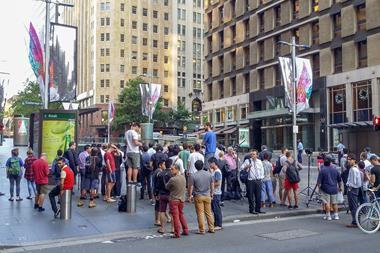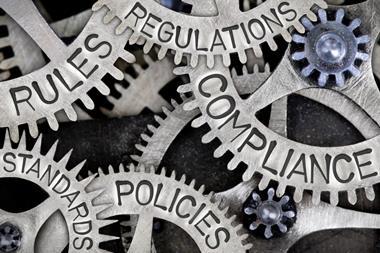Working with EY, Network Rail created an ambitious digital transformation strategy that has improved railway safety and created sustainable, long-term benefits.
The challenge
Network Rail wanted to tackle safety for its employees, particularly for those carrying out repairs or essential maintenance works.

As it is not always possible to close entire sections of the line, workers were vulnerable to the myriad risks that come with a railway that is live and operating.
EY says that 33 employees and contractors have been killed on Network Rail infrastructure since 2008.
A case study on it’s website read: ”Despite significant investment from Network Rail, two previous attempts to invigorate its track worker safety programmes had failed, leaving employees feeling sceptical that the organisation could ever get railway safety right.”
In particular, says EY, the company wanted to revamp its Safe Work Packs (SWP).
These documents often contained 60 A4 pages, detailing the work involved, any site-specific risks, information on which lines would be closed and for how long, and advice on what to do in an emergency.
However, the organisation’s reliance on paper-based information was causing problems for staff, including inaccurate paper trails that led to unnecessary works being carried out, creating potentially dangerous situations.
The environmental burden created by the use of so much paper was another key issue that needed addressing.
The solution
In 2019, Network Rail launched the Safety Task Force programme to completely overhaul its procedures.
Leaders at the organisation had been working with EY for nearly 10 years, and asked for further support to develop and implement a new safety innovation.
“It provides a single source of truth for everyone working on or near the railway line.”
EY developed a digital safety platform called Network Rail–RailHub, with offline capability so that workers can use it in remote locations.
EY said: ”Network Rail–RailHub empowers users to identify, understand and mitigate railway safety risks, book access to the track to carry out work and capture the progress of their work and lessons learned. It provides a single source of truth for everyone working on or near the railway line.”
Getting company buy-in
EY says its teams consulted senior stakeholders and representatives from the population of 22,000 people across Network Rail and its supply chain.
They canvassed views not just on how the new system should work, but also on how people liked to be trained and supported.
This allowed EY to identify areas for improvement, but crucially to also understand how stakeholders would prefer to be taught how to use the new technology.
Dylan Edwards, senior programme manager at Network Rail said: “One of the successes of this digital transformation programme is that we took our end users and the business on the journey with us… To drive behavioural and cultural change, people need to believe in the mission, but they also need to believe that they’re part of it.”
EY added: “[We] were able to diminish scepticism and collaborate with rail workers in a meaningful way; the changes were not being imposed upon them. Instead, frontline workers were an essential voice driving the digital transformation strategy, working jointly with EY consultants to co-create an approach that would be adopted by the stakeholder network.”
“To drive behavioural and cultural change, people need to believe in the mission, but they also need to believe that they’re part of it.”
Each of Network Rail’s 13 routes had ownership and accountability for deployment. However, EY said it worked with each route to create business readiness plans.
The project also involved a persona-based approach communications plan, These personas were developed following extensive interviews and focus groups and meant that employees and wider stakeholders using the system would get tailored messages based on their needs and preferences.
Another key prong to the strategy was a training programme, which upskilled employees across local depots. Workers could use a dedicated hotline which offered practical support, but face to face support was also provided. In total, 12,000 hours of training was delivered.
“This has set a gold standard for transitions to a new system in Network Rail – both from a technology cutover perspective and supporting our user community to use Network Rail–RailHub – with minimal disruption to our business operations,” said Edwards.
The outcomes
EY says that the introduction of Network Rail–RailHub brought numerous safety benefits.
These include:
- increased compliance with key railway safety performance benchmarks for those working on or near the line
- the ability to deliver on its promise to reduce safety rates and address operational risks
- helping to change the organisation’s safety behaviour and culture
- ensuring work is carried out systematically following the correct safety procedures.
There has also been concrete evidence that the reforms are working. Since the introduction of Network Rail–RailHub, there has been an 18% reduction in safety-critical errors in SWPs and a 43% reduction in near-miss incidents.
There are other benefits too.
EY says: ”The transition from legacy systems to a single, integrated, cloud-based system has improved efficiency substantially; users no longer have to switch between systems to complete their work, and source data is pre-populated in Network Rail–RailHub.
“This includes visibility of slots to deliver work, resulting in a 40% reduction in errors on line blockage applications – a key metric for Network Rail.”
“If there was an accident or a near miss, they wouldn’t necessarily know which team was there. There’s much more transparency now.”
The shift away from paper has also improved sustainability, with an estimated 34 million sheets of paper saved every year.
A final key benefit was better data, allowing managers to spot key safety trends and act on them.
“This will facilitate important conversations around safety,” says Toby Keates, programme manager for Network Rail–RailHub.
“Our previous systems were not set up for reporting, so senior management would not have sight of that kind of data or the specifics. For example, if there was an accident or a near miss, they wouldn’t necessarily know which team was there. There’s much more transparency now.”




















No comments yet